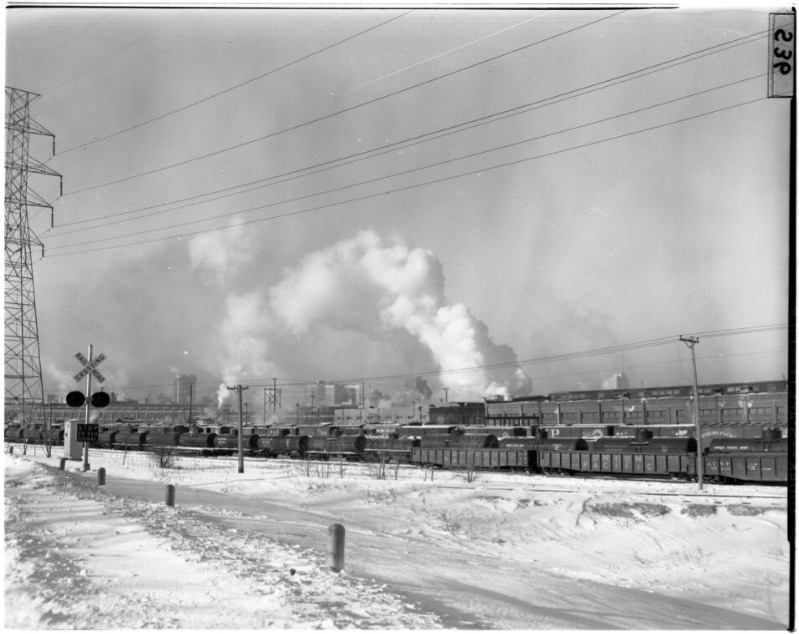Union Pacific Shops
Union Pacific played an active role in contributing to Omaha’s issue with pollution from industrial lead. UP was established in 1862 under the Pacific Railroad Act in order to complete the first transcontinental railroad in North America. This project was a success on May 10th, 1869 when two sets of tracks were joined in Utah with a golden spike (NH, 2012). With limitless opportunities, Union Pacific began seeking new business partnerships it could incur to expand its business beyond government contracts. An easy target would be Omaha; a city with room to lay track and being the original home of the business.
The most significant detail relating UP to industrial lead surrounds land rights. Union Pacific was granted unilateral ownership and control over vast amounts of land surrounding constructed railways. UP began leveraging this resource to their advantage successfully as lead smelting industries began to pop up around Omaha; UP functioned like a landlord to early companies leasing out land rights to factory owners. UP negotiated a deal with ASARCO to have a lease agreement for the ASARCO-Omaha factory on land owned and managed by UP sometime in the 1930’s, but an exact date is unclear. In 1942, UP cemented their relationship with ASARCO by selling the land rights directly to corporate. This business proposition would later be offered to Gould Batteries with similar results (Sasse, 2019).
UP undertook these land deals with corporate profit motive in mind. Initially these deals provided short-term returns to offset operational and project costs, but returns were further maximized by building ‘informal’ partnerships with primary lead smelters. UP began building railways to support the transportation of smelting-related industry supplies to smelters within proximity to existing UP railways. This not only provided certain smelters with lower costs to operate their businesses, but also provided UP with a stable long-term source for fiscal returns. (Fletcher, 02)
UP has a debated legacy within the Omaha community surrounding its role in propagating industrial lead in Omaha. Union Pacific was not proven to be directly responsible for lead contaminant levels in Omaha by the EPA, but contributed $25 million to reduce public pressure against the company after noticing ASARCO’s unsuccessful litigation against EPA initiatives throughout the 80’s and 90’s (NH, 2012). Bolstered by an official ruling from the EPA linking UP to industrial lead, Omaha locals refused to overlook UP’s complicity in allowing smelters to pollute (EPA, 2007). This is coupled with the knowledge that some of the largest polluters operated on land once controlled by UP, and that UP was building rail lines that physically connected smelting locations to UP property. Photos of the UP Shops feature numerous smokestacks that are releasing airborne lead particulates.
UP and its history represents a theme covered in ‘House of Butterflies’ surrounding public reaction to changes in citizen or worker health. As local citizens became aware of UP’s complicity in facilitating and sustaining lead smelteries, backlash and public pressure soared. The citizens of Omaha continued to hold UP accountable while other groups and agencies were indecisive and hesitant with their investigations. It was the physical, tangible elements of industrial lead poisoning that sustained action and pressure against UP. Being able to see the location of primary polluters and understanding the business partnerships that facilitated and predated Omaha’s industrial lead problem generated a sustained social movement demanding accountability from UP (Fletcher, 2019).
